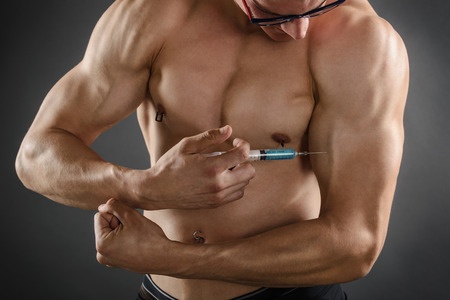This test is run by .
Note that your final mark will not be saved in the system.
Note that your final mark will not be saved in the system.
3.2.4.5 Drugs in sport GapFill
Target Level
C
Running Total
0
0%
Attempt
1 of 3
You must fill all the gaps before clicking ‘Check Answers!’

A win-at-all-costs attitude could result in athletes turning to illegal drugs in sport, which not only increases their risk of bans, fines and public scrutiny if caught, but also presents various health risks. Some of the most commonly used drugs and their physiological effects are outlined below:
-
steroids – These mimic the mainly male hormone,
, and are most commonly taken in maximal-intensity sports such as weightlifting and short-distance sprint events due to their beneficial effect on enhancing muscle protein synthesis to promote growth and recovery, thus developing fitness qualities such as strength and
. Many athletes renowned for their successes have subsequently been found guilty of using this type of drug, including sprinters Dwain Chambers, Marion Jones, Ben Johnson, Justin Gatlin and Tyson Gay.
- Erythropoietin (EPO) – Synthetic versions of this drug are capable of stimulating the production of and, in turn, increased haemoglobin content in the blood. This increases the oxygen-carrying of blood to working muscles during exercise, improving the efficiency of gaseous exchange at the muscle and prolonging performance before fatigue becomes limiting. Therefore, it is mostly suited to activities such as long-distance running, cycling and swimming. A notable case in professional sport was Lance Armstrong, who was stripped of many Tour de France gold medals as a consequence of taking EPO.
- Beta blockers – These are used to by lowering heart rate and blood pressure. They are used for sports that require the use of skills such as in darts, archery and snooker.